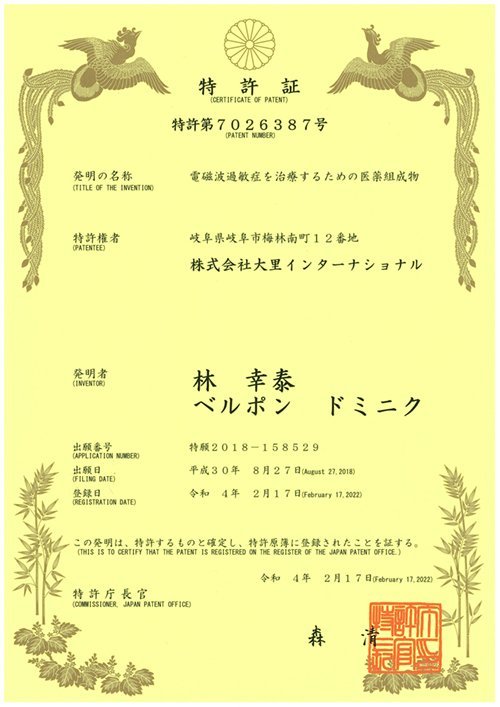News&Topics
Research Results
2022/04/05Research Results
Further Good News for Treatment of Electrohypersensitivity
or Prevention of Dementia!
FPP Is Patented as Pharmaceutical Composition for Treating
Electrohypersensitivity Not Only in U.S. But Also in Japan

■FPP's Effect for prevention of Electrohypersensitivity or Dementia
This patent is based on the FPP clinical study1) using FPP for "Electrohypersensitivity(EHS)" self-reporting patients by Prof. Dominique Belpomme of Paris University, France. In this study, clinical improvement was obtained in 50-60% of the cases, among which 20-35% presented major improvement that mainly consisted of the regression of cognitive symptoms such as loss of short-term memory, concentration, attention deficiencies, insomnia and fatigue. This clinical improvement was objectively supported by a statistically significant normal recovery of mean PI in the temporal lobes by using ultrasonic cerebral tomosphygmography (UCTS), evidenced by a statistically significant decrease in malondialdehyde levels in the plasma and increase in the Glutathione peroxidase activity in red blood cells.
